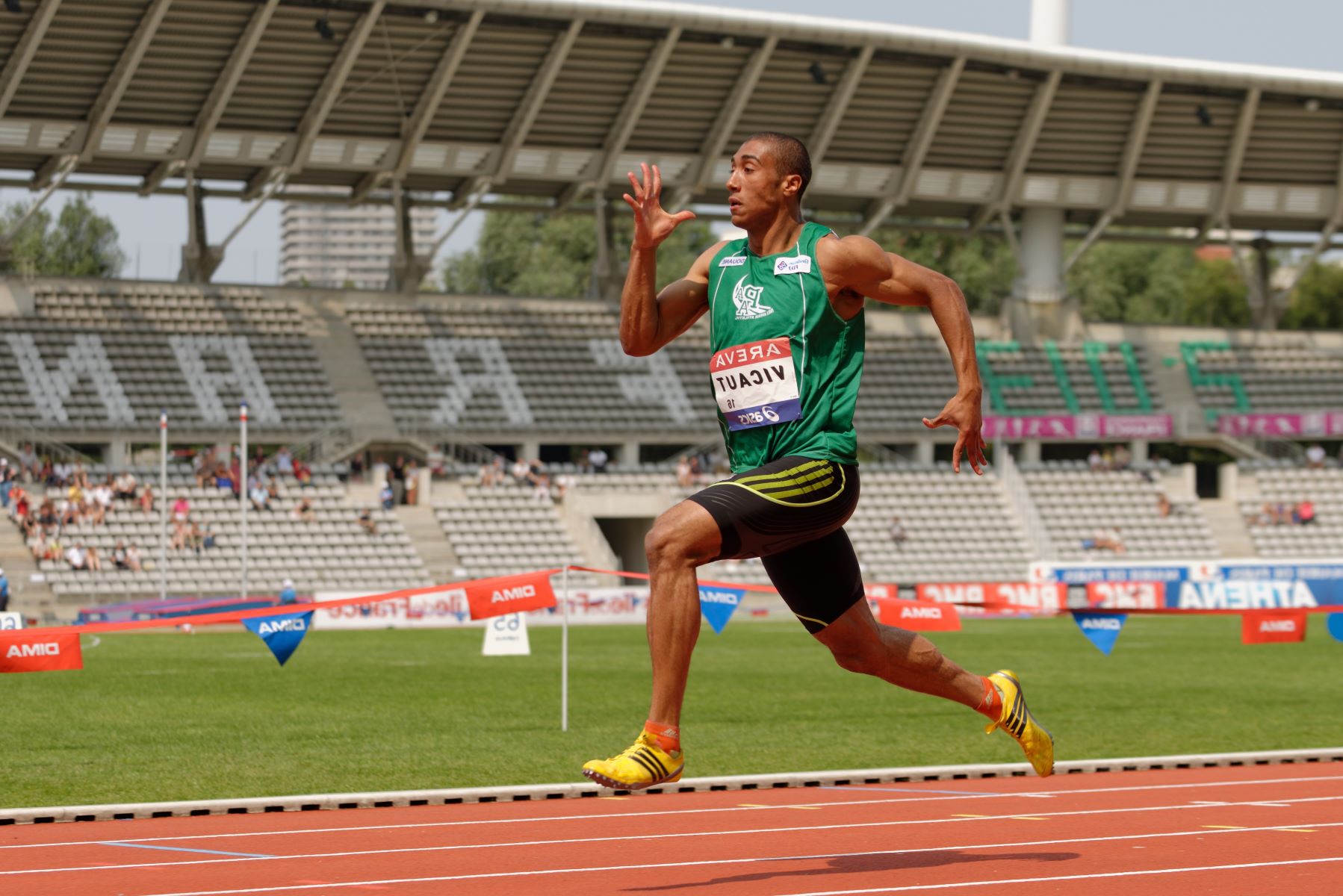Home>Health & Nutrition>Recovery>What Is The Recommended Time Frame For Running After Abdominal Surgery?


Recovery
What Is The Recommended Time Frame For Running After Abdominal Surgery?
Published: February 28, 2024
Discover the recommended recovery time frame for running after abdominal surgery and ensure a safe and effective post-operative healing process. Gain insights on the ideal duration for resuming physical activity.
(Many of the links in this article redirect to a specific reviewed product. Your purchase of these products through affiliate links helps to generate commission for Therunningadvisor.com, at no extra cost. Learn more)
Table of Contents
Understanding the Recovery Process
Recovery after abdominal surgery is a crucial phase that requires patience and careful attention to one's body. Understanding the recovery process is essential for individuals who are eager to resume physical activities, such as running, after undergoing abdominal surgery. The body's ability to heal and regain strength varies from person to person, and it is important to recognize that the recovery timeline is not a one-size-fits-all scenario.
Following abdominal surgery, the body undergoes a series of intricate healing processes. Initially, the focus is on managing pain, preventing infection, and allowing the surgical incision to heal. The body's natural healing mechanisms work to repair the tissues and muscles that were affected during the surgical procedure. This initial phase of recovery is crucial for laying the foundation for the subsequent stages of rehabilitation.
As the recovery progresses, individuals may experience fluctuations in energy levels, discomfort, and the gradual return of mobility. It is important to acknowledge that the body's healing trajectory is influenced by various factors, including the type of surgery performed, the individual's overall health, and adherence to post-operative care instructions. While some individuals may experience a relatively smooth recovery, others may encounter challenges that require additional time and attention.
Moreover, the psychological aspect of recovery should not be overlooked. Patients may undergo emotional ups and downs as they navigate the post-operative phase. It is normal to feel a range of emotions, including anxiety, frustration, and impatience. Acknowledging and addressing these emotions is an integral part of the recovery process, as mental well-being plays a significant role in overall healing.
Understanding the recovery process involves recognizing the body's signals and respecting its need for rest and gradual progression. Rushing the recovery process can lead to setbacks and potential complications. Therefore, it is essential to approach the recovery journey with a mindset of patience, resilience, and attentiveness to one's physical and emotional well-being.
By comprehending the intricacies of the recovery process, individuals can make informed decisions regarding the appropriate timing for resuming physical activities, such as running, after abdominal surgery. This understanding empowers individuals to prioritize their health and well-being while gradually reintegrating physical exercise into their post-operative lifestyle.
Factors to Consider Before Running
Before embarking on a running regimen following abdominal surgery, it is imperative to carefully consider several crucial factors that can significantly impact the recovery process and overall well-being. These factors serve as essential guidelines to ensure a safe and effective transition back to physical activity.
1. Medical Clearance:
Prior to resuming running or any strenuous physical activity, obtaining medical clearance from the healthcare provider who oversaw the surgery is paramount. The healthcare professional can assess the individual's post-operative progress, evaluate the healing of the surgical incision, and provide personalized recommendations based on the specific surgical procedure and the individual's overall health status.
2. Healing of the Surgical Incision:
The complete healing of the surgical incision is a fundamental prerequisite before engaging in running. The incision site should be free from signs of infection, such as redness, swelling, or discharge. Additionally, the incision should have sufficient tensile strength to withstand the impact and movement associated with running.
3. Physical Readiness:
Assessing one's physical readiness involves gauging the body's capacity to endure the physical demands of running. It is essential to gradually reintroduce physical activity and observe how the body responds. Individuals should be mindful of any persistent discomfort, weakness, or limitations in mobility that may indicate the need for further recovery before engaging in running.
4. Core Strength and Stability:
Abdominal surgery can impact the strength and stability of the core muscles. Before running, it is beneficial to engage in targeted exercises to rebuild core strength and stability. Strengthening the core muscles can enhance posture, balance, and overall running performance while reducing the risk of strain or injury.
5. Gradual Progression:
Embracing a gradual approach to reintroducing running is crucial for minimizing the risk of complications and optimizing the body's adaptation to physical exertion. Gradual progression allows the body to acclimate to the impact and intensity of running, reducing the likelihood of overexertion and setbacks in the recovery process.
6. Psychological Preparedness:
The psychological aspect of resuming running should not be overlooked. Individuals may experience apprehension or fear related to physical activity following surgery. Building confidence and a positive mindset through gradual reintroduction to running can contribute to a smoother transition and overall well-being.
7. Hydration and Nutrition:
Maintaining adequate hydration and nutrition is essential for supporting the body's recovery and energy levels. Proper hydration and nutrition play a vital role in optimizing physical performance and aiding the body's healing processes.
By conscientiously considering these factors before resuming running, individuals can approach this milestone with informed decision-making and a heightened awareness of their body's needs. This thoughtful approach sets the stage for a safe and rewarding return to running, promoting both physical and emotional well-being during the post-operative recovery journey.
Recommended Time Frame for Running
The recommended time frame for resuming running after abdominal surgery is a pivotal consideration that directly impacts the post-operative recovery process. While the eagerness to return to physical activity is understandable, it is essential to adhere to a structured timeline that prioritizes the body's healing and adaptation to the demands of running.
The specific time frame for resuming running after abdominal surgery is contingent upon various factors, including the type of surgical procedure, individual healing trajectory, and medical guidance. As a general guideline, most healthcare professionals advise waiting at least 6 to 8 weeks before reintroducing running or other high-impact activities following abdominal surgery. This initial period allows for the crucial stages of wound healing, tissue repair, and early recovery to take place without the added stress of vigorous physical exertion.
During the initial weeks of recovery, the focus is on allowing the body to heal, gradually regaining mobility, and rebuilding strength. Engaging in light activities such as walking, gentle stretching, and low-impact exercises can support circulation, promote healing, and lay the groundwork for the eventual return to running.
Around the 6 to 8-week mark, individuals who have undergone abdominal surgery may begin to explore the possibility of incorporating short intervals of light jogging or running into their routine. It is important to approach this phase with caution and attentiveness to the body's signals. Paying close attention to any discomfort, fatigue, or limitations is crucial for gauging the body's readiness to withstand the impact and intensity of running.
As the recovery progresses, typically around the 10 to 12-week mark, individuals may receive clearance from their healthcare provider to gradually increase the duration and intensity of running. This phase marks a significant milestone in the recovery journey, as it signifies the body's enhanced capacity to tolerate the physical demands of running while minimizing the risk of complications or setbacks.
It is important to emphasize that the recommended time frame for running after abdominal surgery is not a rigid deadline but rather a flexible guideline that should be personalized to align with the individual's healing progress and medical recommendations. Factors such as the complexity of the surgical procedure, the body's response to recovery, and any additional health considerations play a crucial role in determining the optimal timing for resuming running.
By respecting the recommended time frame for running after abdominal surgery and prioritizing gradual progression, individuals can navigate the post-operative recovery journey with attentiveness to their body's needs and a commitment to fostering a safe and effective return to physical activity.
This approach not only promotes physical well-being but also cultivates a sense of empowerment and resilience as individuals gradually reclaim their active lifestyle following abdominal surgery.
Precautions and Guidelines for Running After Abdominal Surgery
After receiving medical clearance and diligently adhering to the recommended time frame for resuming running following abdominal surgery, it is essential to approach this milestone with a comprehensive understanding of the precautions and guidelines that can optimize the safety, effectiveness, and overall experience of returning to running.
1. Gradual Progression:
Embracing a gradual approach to reintroducing running is paramount for mitigating the risk of strain or injury. Begin with short intervals of light jogging or running, allowing the body to acclimate to the impact and intensity. Gradually increase the duration and intensity of running as the body adapts and gains strength.
2. Listen to Your Body:
Attentiveness to the body's signals is crucial. Pay close attention to any discomfort, fatigue, or unusual sensations during and after running. If persistent discomfort or pain arises, it is imperative to promptly consult with a healthcare professional to assess the underlying cause and receive appropriate guidance.
Read more: Is ‘crash’ Training Recommended For Runners?
3. Core Strengthening Exercises:
Incorporate targeted exercises to rebuild core strength and stability. Strengthening the core muscles is instrumental in enhancing posture, balance, and overall running performance while reducing the risk of strain or injury to the abdominal area.
4. Proper Warm-Up and Cool Down:
Prior to running, engage in a thorough warm-up routine to prepare the body for physical exertion. Similarly, incorporate a comprehensive cool-down regimen to aid in the gradual recovery of the body post-running. These practices can help minimize the risk of muscle strain and promote overall flexibility.
5. Hydration and Nutrition:
Maintain adequate hydration and nutrition to support the body's energy levels and recovery processes. Proper hydration and nutrition play a vital role in optimizing physical performance and aiding the body's healing mechanisms.
6. Posture and Breathing Techniques:
Focus on maintaining proper posture and breathing techniques while running. Conscious attention to posture and breathing can enhance running efficiency, reduce the risk of muscle fatigue, and contribute to a more enjoyable running experience.
Read more: Summer Running: What To Do And What To Avoid
7. Appropriate Attire and Footwear:
Select appropriate running attire and footwear that provide adequate support and comfort. Properly fitted footwear and attire can minimize the risk of discomfort, blisters, and other running-related issues, thereby promoting a more enjoyable and sustainable running experience.
8. Regular Monitoring and Evaluation:
Consistently monitor and evaluate the body's response to running. Assess any changes in physical comfort, endurance, and overall well-being. Regular self-assessment can provide valuable insights into the body's adaptation to running and guide adjustments to the running routine as needed.
By conscientiously adhering to these precautions and guidelines, individuals can navigate the post-operative phase with a heightened awareness of their body's needs and a commitment to fostering a safe and effective return to running. This mindful approach not only promotes physical well-being but also cultivates a sense of empowerment and resilience as individuals gradually reclaim their active lifestyle following abdominal surgery.












